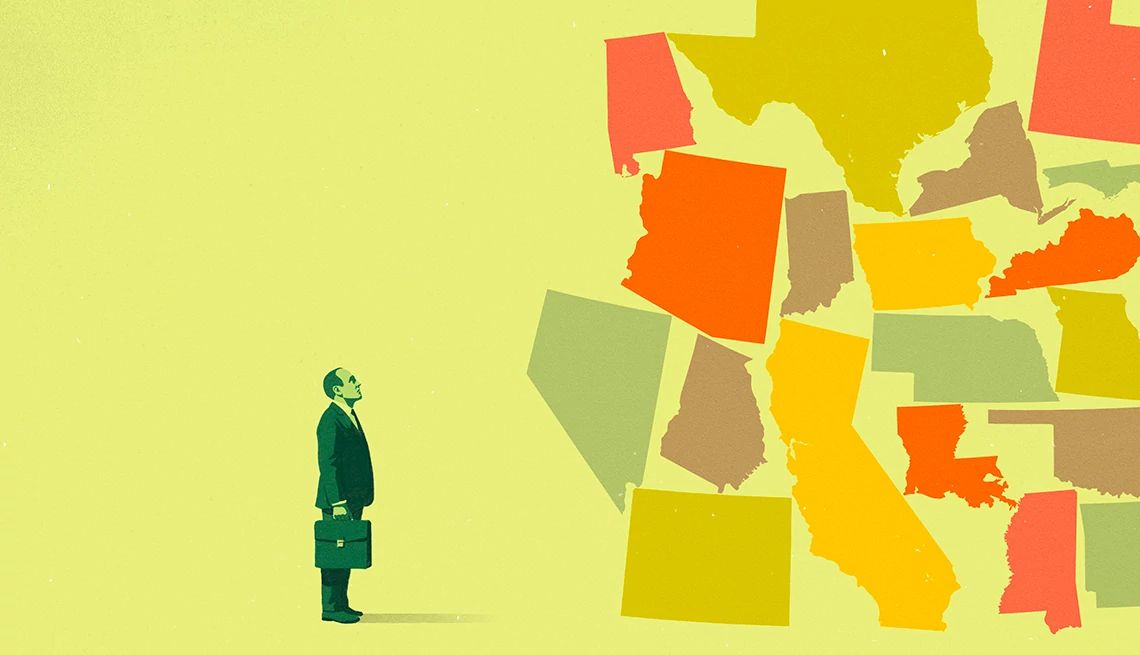AARP Hearing Center


In 2016, Alan Holben, a professional photographer, headed west to St. George, Utah, because he and his wife pictured living out their golden years among the state’s scenic red rocks. The couple’s move from Michigan wasn’t about retirement but, rather, a new chapter inspired by a vacation touring the state’s five national parks.
“We came looking for someplace that was no longer in the snow belt and had beautiful scenery for both of us as artists,” says Holben, who is 66.
His wife, Susan, who passed away in April 2025, served on the board at a local arts center, and Holben pursued full-time photography. In Michigan, he had shot local high school events and other projects while working at a software company. But St. George’s natural surroundings allowed Holben to pursue his goal of blending an outdoor lifestyle during the day with his nighttime business of photographing local theater and nonprofit events, as well as sports like the rodeo and the local Ironman triathlon.
Holben’s move may have been a lifestyle and career upgrade, according to a new report that ranks how hospitable states may be to older workers. While Michigan finished 34th in Seniorly’s list of “Best States for Older Workers 2025,” Utah landed in ninth place.
The American workforce is turning increasingly grayer, according to the report from Seniorly, an online resource that helps older adults and their families find independent and assisted living communities. A record 11.2 million Americans age 65 and older are still working. That number is projected to rise to 14.8 million by 2033, when roughly one in 12 American workers will be 65 or older.
Seniorly’s report does not analyze the personal decisions that motivate people to work later in life, but the ranking does examine a range of data that suggests reasons why some states may be more suitable than others for older workers. Using data from the Census Bureau and other sources from 2023 to 2025, the ranking is built from six different measures of how well the state may suit older workers. Those measures include the percentage of people age 60 and older who are still working, the median household income for people 65-plus and the number of workplace age discrimination complaints per 100,000 workers age 45 and older.
One reason more people are choosing to work later in life is that they need the money.
“The way that people are ready for retirement today is fairly different than the way people were ready for retirement, financially speaking, 20 years ago,” Seniorly Chief Growth Officer Christine Healy predicts.
A recent AARP study found that 20 percent of adults age 50 and older have no retirement savings, and 61 percent are worried they will not have enough money to support themselves in retirement.
“There are going to be those who work for cognitive and social reasons, and those who do it because they're compelled to financially,” says Healy.


































































More From AARP
10 Remote Jobs That Are Hot This Summer
Part-time roles are available, too
How Retirees are Winning Big by Becoming ‘Sweepers’
These older adults have turned sweepstakes into a full-time job — and they’re cleaning upRésumé Tips for People 50-Plus
Highlight your job skills instead of your age